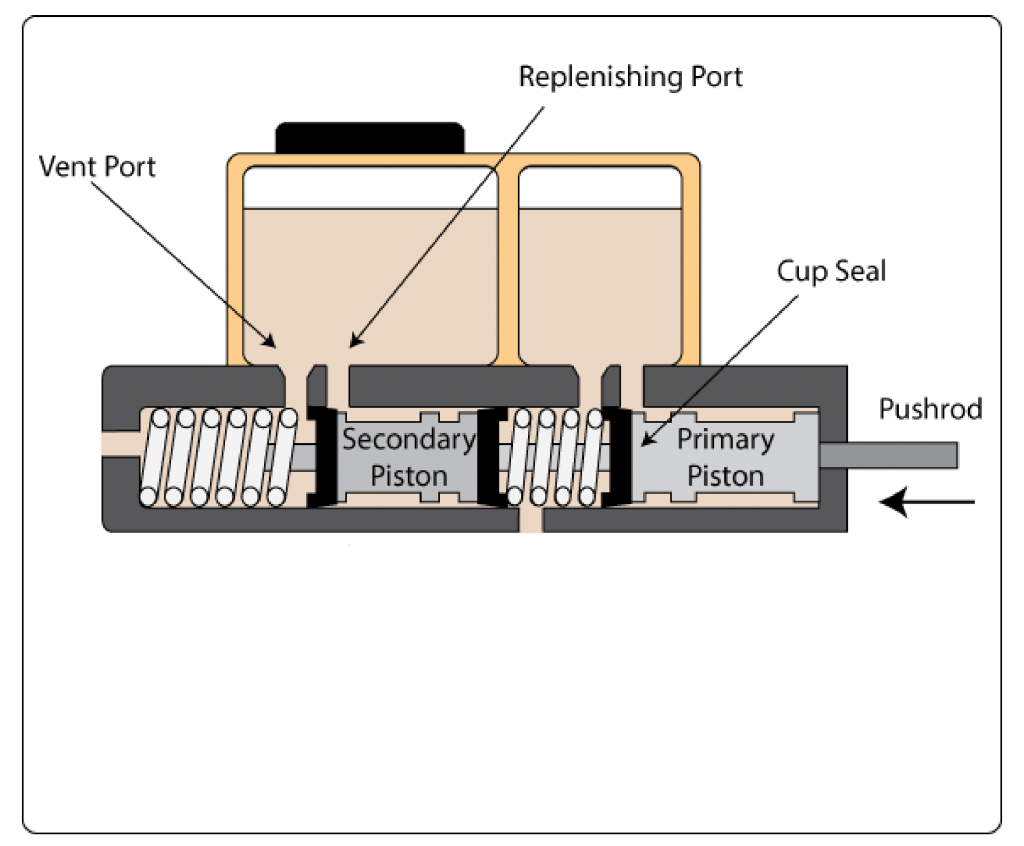I have a brake bleeding question. We installed a Wilwood four-wheel disc brake system in my ’68 Nova about 15 years ago, and for a couple of years of driving the car stopped very well before it was put away. The car has now been sitting, waiting for me to finish it. My friends and I have finally got it together. We changed the automatic trans over to a manual which required changing the pedals, but that was the only thing that remotely came near the brakes. The brakes worked fine when the car last ran, but now we’ve got a very low spongy pedal. We’ve bled the system several times but with no luck. It still has a very spongy pedal where only at the very end of the travel do the brakes apply. Do you have any ideas? — D.L.
…
Jeff Smith: Assuming you’ve bled the system correctly, there may be a solution here.
The clue was you converting from an automatic to a manual transmission. That means you would have changed the pedal assembly to a brake and clutch pedal assembly. When this is done, it’s not unusual for the brake pedal to be adjusted in such a way that it presses on the master cylinder piston, moving it slightly inward. This many not sound like a big deal, but it is.
We’ve included a cross-sectional drawing of a master cylinder that shows how the two pistons in a dual master cylinder are arranged.

Note the position of the piston relative to the vent port.
With the piston fully retracted in the bore, the seal travels past this vent and opens into the reservoir. If, however, the piston and seal assembly is forced slightly forward in the bore, the seal can close off this vent passage.
Fluid still enters from behind the piston to compensate for fluid that might be lost, but without the vent, the pressure balance is inadequate. Both systems must be functional for the brakes to operate correctly.
We had a similar problem with a hot rod a few years ago with the same symptoms. Our first clue was when we attempted to gravity bleed the system and very little fluid escaped. At first we attributed this to blocked bleeder screws, but they turned out to be clean.
Next, at the suggestion from our buddy Bill Irwin, we removed the master cylinder cover, covered the engine compartment around the master with large towels and looked to see if there was a spout of brake fluid that would shoot up when we lightly applied the brake pedal. No spout appeared which suggested our pedal was improperly adjusted.
What we found was a new brake pedal switch had been installed. When it was adjusted, it inadvertently pushed the brake pedal forward, moving the master cylinder piston forward which closed the master cylinder vent port.
We then re-adjusted the brake pedal to create a tiny amount of pedal free play at the master cylinder. We then re-tested the master and noticed a small spout of brake fluid appear in the reservoir when the pedal was depressed. This showed that the system was now allowing the piston cylinders to access the vent. We’ve also seen systems that work properly but don’t exhibit that little squirt of fluid from the reservoir.
Once the brake pedal was properly adjusted, the system began to work more freely and the pedal still exhibited a slight spongy feel but more importantly, the pedal was much firmer at a much higher position than previously. We ran through one more brake bleeding session and the pedal immediately returned to its solid, high-position feel that we had come to expect.
This is one of those times when a simple fix can be performed very quickly and a troublesome problem is eliminated. Those are the ones we like the best — easy problems that are easy to fix!

Thank you for your help..!